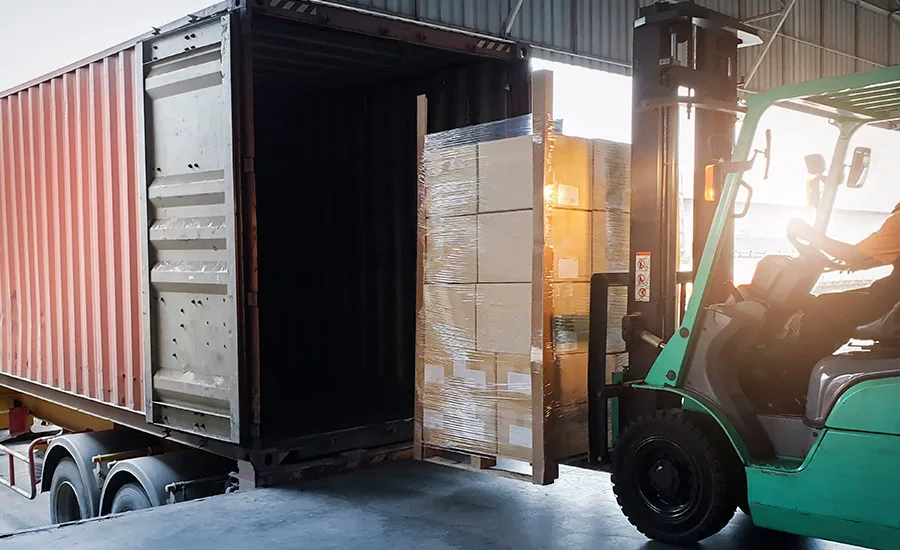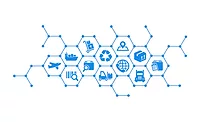Challenges of Last-Mile Delivery in the Adhesives Industry
Last-mile delivery, which marks the end point of the supply chain, is generally considered to be the most challenging phase to optimize and also the most expensive phase.

Courtesy of 1933bkk / iStock / Getty Images Plus via Getty Images
Supply chain management is a complicated process that has grown more complex as business has become increasingly global and more digital. In addition, disruptions to the supply chain are often unpredictable and unavoidable, as was painfully illustrated by the COVID-19 pandemic. Businesses operating in today’s adhesives industry often must overcome a host of challenges to keep supply chains running optimally.
Last-mile delivery, which marks the end point of the supply chain, is generally considered to be the most challenging phase to optimize. Typically, last-mile delivery is the most expensive phase, with some figures showing last mile delivery to account for as much as 53% of delivery costs.
The high cost of last-mile delivery is due in large part to the nature of the routes that must be completed. The city traffic and navigation required for this phase of delivery requires more idle time than the highway transportation phase. In addition, it requires more gas, more maintenance of delivery vehicles, and more drivers, all of which add to costs.
Along with being the most expensive, last-mile delivery is also typically the most inefficient link in the chain. More than any other phase, last-mile delivery includes variables that are unpredictable and ungovernable. Keeping schedules requires the cooperation of traffic, weather, and other factors that cannot be controlled. Getting products into the hands of customers also relies on the cooperation of customers, which cannot be guaranteed, especially when delays are experienced. While production happens in an environment that companies can typically control, delivery happens in the wild.
The following presents some key factors that make last-mile delivery especially challenging, along with some solutions that can help companies to optimize the process.
Customer Expectations
The growth of e-commerce has given consumers the expectation that they will be in the loop throughout the entire supply chain process. This begins even before a sale is made, as some prospective customers seek to know the locations from which materials are sourced. As purchases are considered, shoppers have come to expect information on the available supply, time of delivery, and costs that may not be included in the sale price.
Once a purchase is made, expectations include an ongoing string of notifications that provide the purchaser with updates on the delivery process. These include updates on when items are packaged, shipped, and ultimately delivered. Businesses that do not meet these expectations will find themselves operating at a competitive disadvantage.
The most effective response to these expectations is to give the people what they want. If fulfillment platforms do not already provide the capability to provide relevant delivery notifications, there are options that can be integrated to enable it. In essence, these notifications enhance the transparency of the shipping process in a way that can be empowering to customers.
Implementing an enhanced system of notifications can also serve the company selling the products. Updating shipping notifications can include marketing material such as notifications about current deals and coupons for discounts on future purchases. Notifications can also be copied to the dispatch team, alerting it to issues that may demand its attention.
Finally, notifications that provide updated delivery times — whether those times are earlier or later than originally expected — are important to ensure that the customer will be available to accept deliveries. Undeliverable shipments pose a significant challenge to delivery efficiency, effectively doubling the costs related to delivery. When customers are notified with plenty of advance warning, they have the opportunity to inform dispatchers should a delivery need to be rescheduled.
Increased Delivery Speed
Developments in e-commerce have also led consumers to expect a more rapid delivery schedule; same-day options are becoming more common in the delivery space. As a result, customers are not as patient with deliveries as they once were. A recent survey shows that more than 50% of buyers will take their business elsewhere if shipping expectations are not met.
Many businesses are turning to technology to provide quicker last-mile delivery options. This often involves leveraging artificial intelligence (AI) and machine learning for enhanced route planning and optimization. Platforms that provide this service not only make sure that deliveries take the most efficient route, but are able to identify orders that can be shipped together to take advantage of delivery proximities. Furthermore, they can provide real-time updates to routing that take into account changes in traffic or weather conditions and new information on customer availability.
Driver-Related Issues
Issues related to staffing, scheduling, and retaining drivers present yet another challenge to optimizing last-mile delivery. Building a reliable delivery force is challenging, especially in the aftermath of the Great Resignation. While providing adequate compensation is always a factor in securing and keeping experienced and committed drivers, it is not the only factor that should be considered.
Providing tools that streamline processes for drivers is one way to improve hiring and retention. These include apps that make it easier to apply for positions, receive assignments, and complete deliveries. Just like with customers, keeping drivers in the loop provides a valuable degree of empowerment.
Many companies have turned to Delivery-as-a-Service (DaaS) to address the challenges related to managing drivers. DaaS outsources the delivery management component, utilizing drivers provided by a third-party logistics company. This relieves companies of logistics duties as well as HR responsibilities such as hiring and payroll, which are now managed by the DaaS provider.
DaaS provides a win-win in terms of the benefits it delivers to drivers and companies alike. Logistics companies utilizing DaaS services provide their drivers with more options in terms of the types and volume of deliveries they are expected to complete. This results in drivers who are typically more motivated to stay with the company and to deliver with a higher level of quality.
For companies, DaaS allows businesses to scale their delivery team with ease as demands change. With an in-house delivery team, companies must staff for peak volume, which can leave drivers idle when delivery demands are lower. DaaS provides a solution to the challenges associated with minimizing the costs of delivery teams.
While technology has provided a steady stream of tools that can be used to improve last mile delivery, it has also created expectations for a higher level of service. Managing the tension between delivery demands and delivery efficiency promises to be a key challenge that companies must overcome as they move into 2024 and beyond.
Learn more about Senpex at https://web.senpex.com.
Looking for a reprint of this article?
From high-res PDFs to custom plaques, order your copy today!






